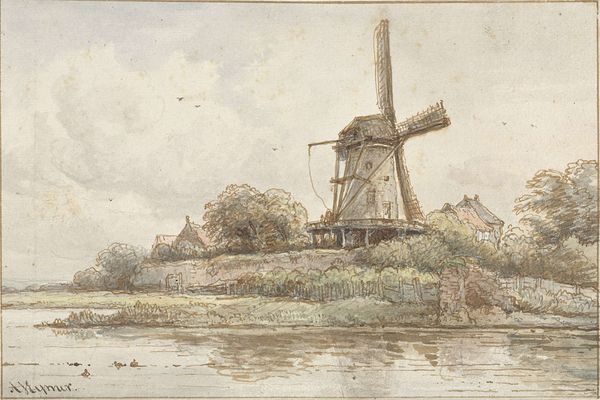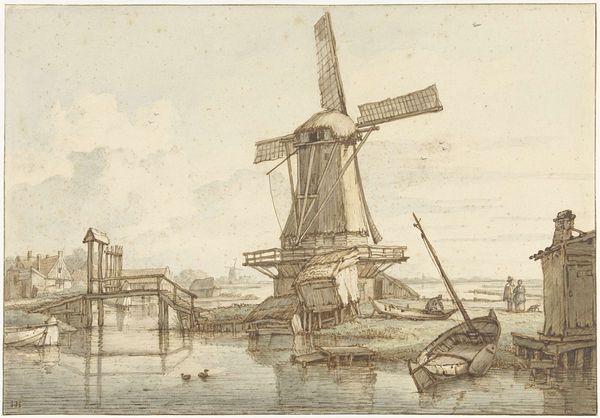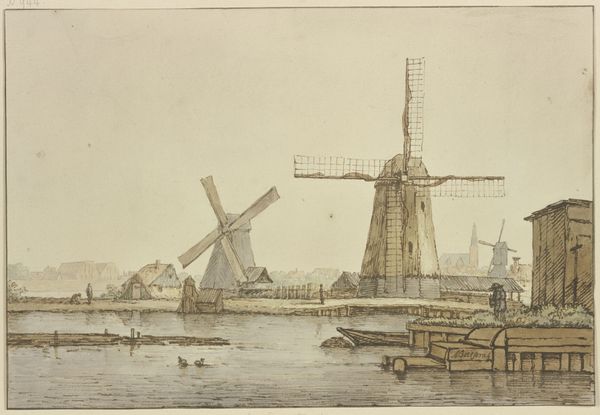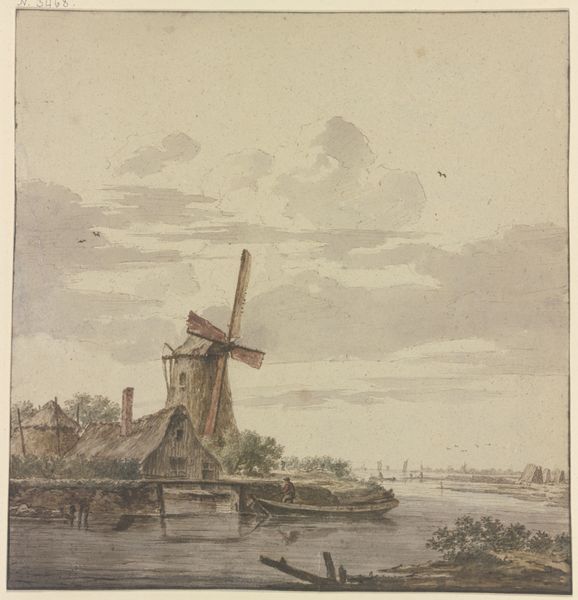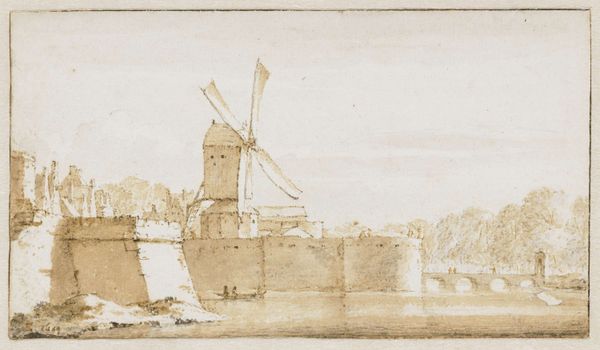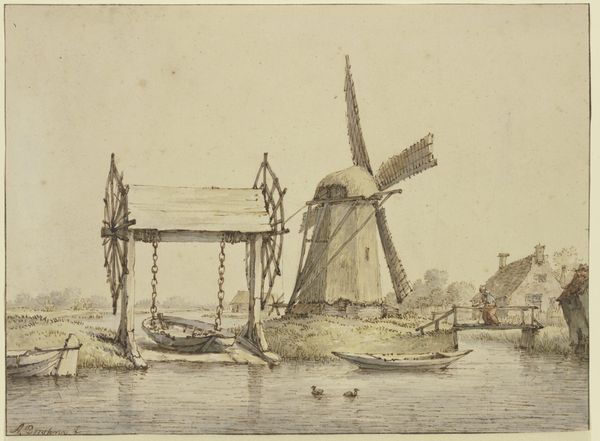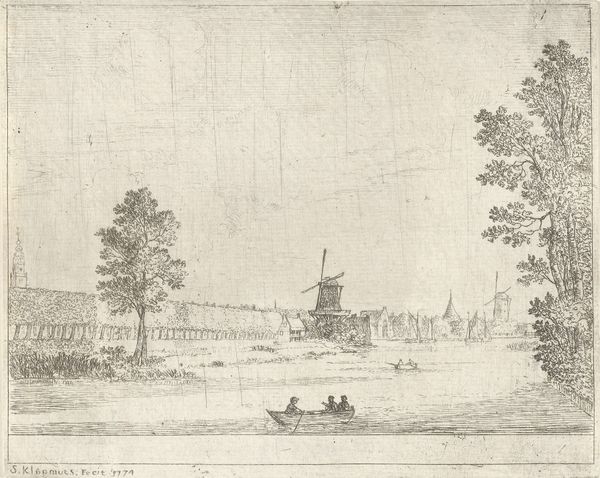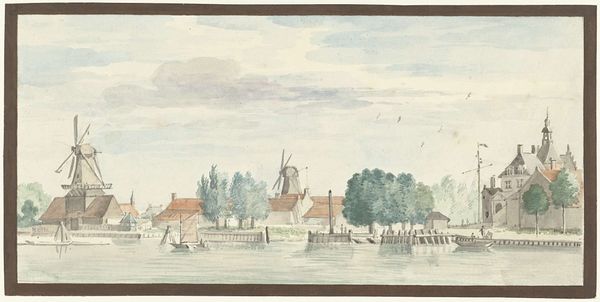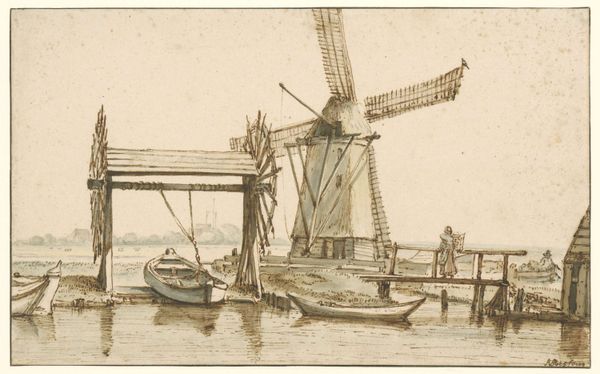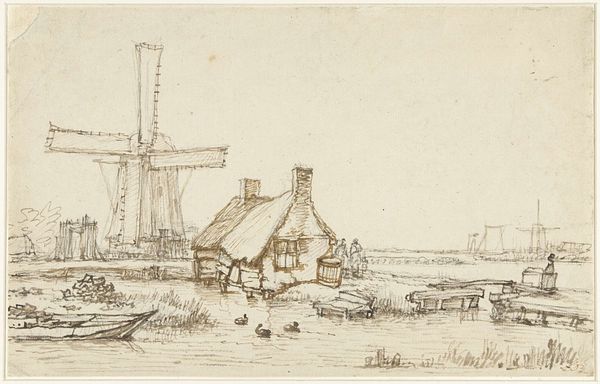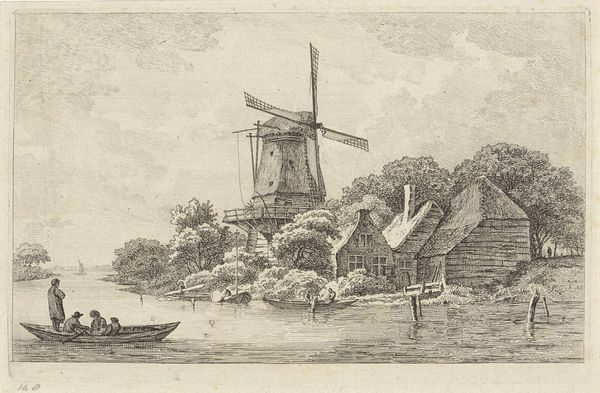
drawing, plein-air, paper, watercolor, ink, pencil
#
drawing
#
dutch-golden-age
#
plein-air
#
pencil sketch
#
landscape
#
paper
#
watercolor
#
ink
#
coloured pencil
#
pencil
#
genre-painting
Dimensions: height 209 mm, width 330 mm
Copyright: Rijks Museum: Open Domain
Curator: Here we have “The Windmill on the Water” by Anthonie van Borssom, likely created sometime between 1660 and 1677. It's a landscape executed with ink, watercolor, and pencil on paper. What's your initial impression? Editor: Bleakly charming! There’s something about the spareness of the lines and the muted palette. It's so elemental: earth, water, sky, and this strange little man-made structure mediating it all. Sort of haunting in its quietude. Curator: Yes, and the technique itself echoes that spareness. You can see the pencil underdrawing, revealing the artistic process. The rapid strokes of ink and translucent washes create a sense of immediacy; almost like a field sketch done on site, capturing a fleeting moment. These plein-air studies, with their emphasis on observation, were critical for the landscape paintings that defined the Dutch Golden Age. Editor: The windmill feels a bit…isolated. It dominates the scene but seems quite vulnerable to the vastness surrounding it. Makes me think about labor, the miller’s isolated existence. A tiny person beside the large mechanism to grind the flour, their own tiny lives dependant on this energy. Curator: Absolutely. Consider the materiality: the paper itself, likely handmade, the pigments derived from minerals and plants, the labor involved in creating both the artwork and the scene depicted. This windmill was not just picturesque; it was a machine deeply embedded in the economic lifeblood of the community. Van Borssom elevates a common industrial scene using these elegant artistic processes, intertwining art and industry. Editor: It really humanizes what could be simply seen as landscape. There are other people depicted at different points of the land; it becomes less about pure landscape and more about humanity. So I suppose van Borssom wanted to capture this Dutch reality? Curator: Exactly. Through examining the means of production, both in the scene depicted and the creation of the drawing itself, we can consider not only the aesthetics of the artwork but also the social and economic context from which it emerged. Editor: And you’re right. The way he marries artistry with the quotidian really invites us to pause and contemplate the human endeavor, as it makes its mark on the landscape. It has changed how I approach landscape art completely!
Comments
No comments
Be the first to comment and join the conversation on the ultimate creative platform.

